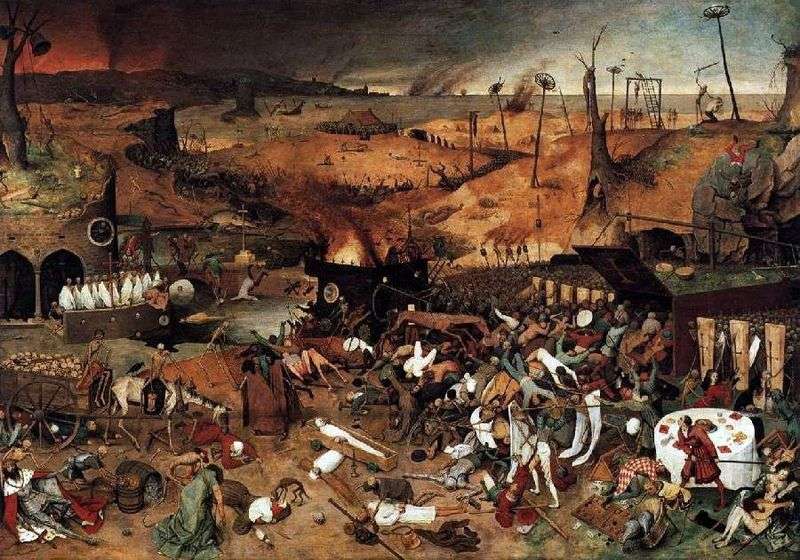
Bruegel does not come up with this story. Even the Gothic Middle Ages developed a fairly carefully differentiated iconography of the dances of death, the triumphs of death, the art of dying. These are different iconographic motifs. “Dance of death” was usually a series of scenes depicting a round dance, where skeletons jerk, jumping, dragging people from various social strata: emperors, cardinals, merchants. “Triumphs of death” – these are the pictures in which most often skeletons or death with a scythe as a decaying corpse takes over the world.
In the Netherlands, the Inquisition raged, the Spaniards tried to suppress the popular uprising with fire and sword. All this is reflected in the artist’s work.
In the picture of The Triumph of Death written about 1562, Brueghel, as if looking at the world through the prism of Bosch, creates an eerie “panegyric” of Death: in the glow of fires a barren and deserted land, covered with pillars with wheels of torture and gallows; on the horizon – the same desolate sea with dying ships.
The impression of the sinister fantasy is reinforced by the fact that Peter Bruegel presented Death in the form of innumerable hordes of skeleton warriors, attracting crowds of people – cardinals and kings, peasants and soldiers, women and monks, knights, lovers, feasting – to a huge open coffin. Humanity in the face of Death in the opinion of Peter Brueghel appears as a powerless multiplicity of blind particles in the realm of nonsense, cruelty and universal death.
The space covered by the picture is full of different scenes, filled with different symbols. Here is a symbolic image of the medieval understanding of the “triumph of death”, where it is depicted as a skeleton on a lean horse, and “the dance of death,” in which all are equal before the inevitable end.
In the right corner is a table surrounded by feasting and debauched young people; they are also awaited by death.
In the left corner there is a lying figure in the crown, in a scarlet robe on an ermine fur, in lats, whose death is a skeleton; death, has already shown his rights to him, now is interested in lying next to the king of gold, obtained by deception and money-grubbing.
Near the cardinal in a broad-brimmed hat, depicted from the back, a simple townspeople who fell prostrate; next to her is a baby who is smelling a dog-skeleton. A skinny horse, guided by a skeleton, draws a full cart of skulls.
On a high parapet, next to the round building of classical architecture, skeletons clad in a kind of white toga, grouped around the cross, appear as a tribunal. In the background of the picture is a landscape dotted with gallows with hanged skeletons, scenes of battles and fires.
When you look at the details, you are amazed at one circumstance: there are hundreds of skeletons, hundreds of skulls. Well, you can “squeeze”, so to speak, in an artistic, imaginative relationship from the skull? After all, everything is absolutely monotonous.
But Bruegel depicts them in such reversals, in such positions that these skulls seem to acquire facial expressions. They seem to be either winking, now grinning, then smiling with a devilish grin, then, on the contrary, with menacingly failing eyes. These details are remarkably executed by the artist and bear witness to his highest craftsmanship.
The painting “The Triumph of Death” reminds humanity of the inevitability of death. The author considers death to be the completion of everything, for it does not leave any hope – neither for glory nor for eternity. Skeletons make their own terrible judgment, which no one can escape-neither the king, nor the slave, nor the preacher, nor the sinner. People, trying to save from death, rush into the man-hole, on the lid of which the cross also stood, but this place does not seem to be a salvation, but a kind of mousetrap death. The world is dying under the funeral battle of bells swinging with skeletons in the upper left corner of the picture.
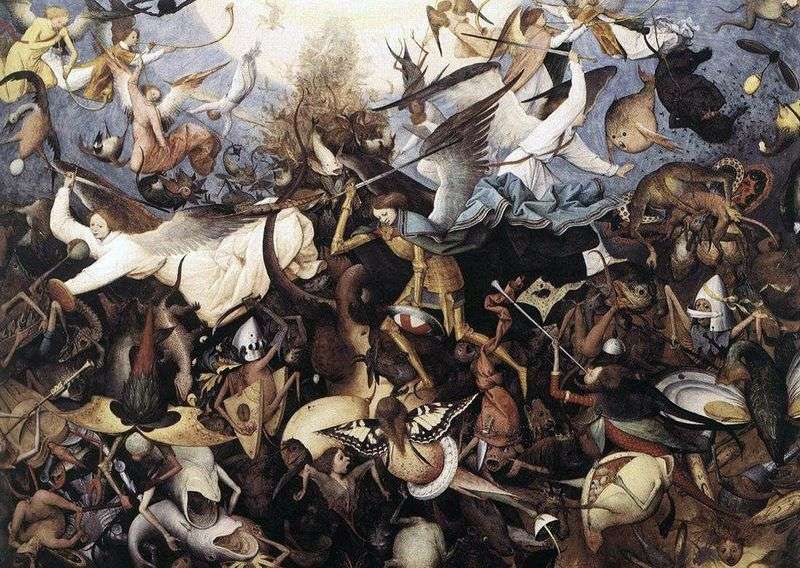 The Fall of the Rebellious Angels by Peter Brueghel
The Fall of the Rebellious Angels by Peter Brueghel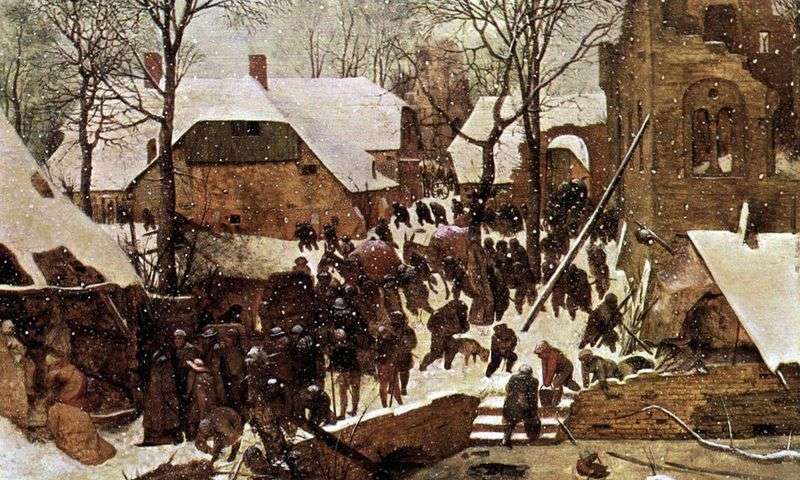 The Adoration of the Magi in the Winter Landscape by Peter Brueghel
The Adoration of the Magi in the Winter Landscape by Peter Brueghel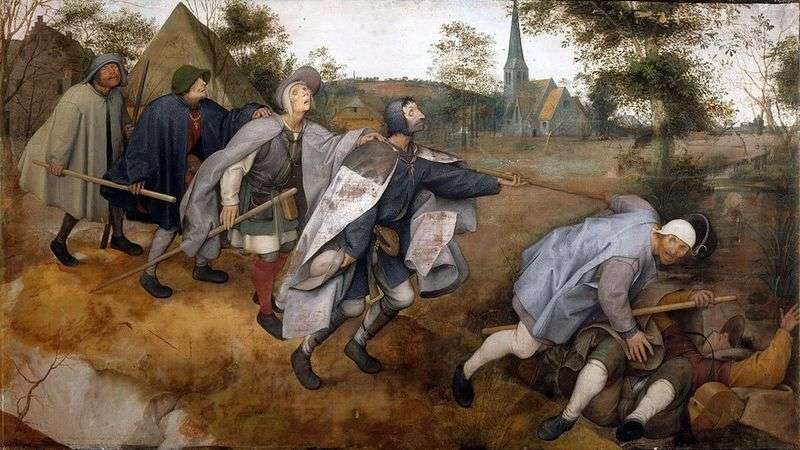 The Parable of the Blind by Peter Brueghel
The Parable of the Blind by Peter Brueghel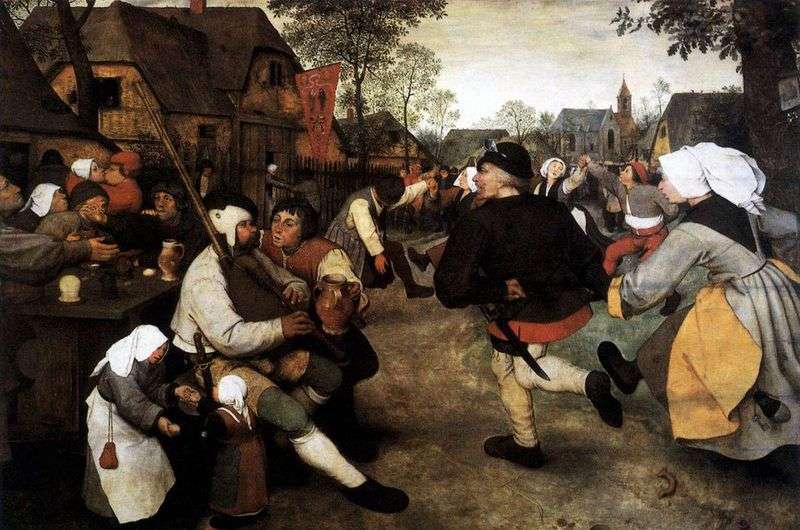 Peasant Dance by Peter Brueghel
Peasant Dance by Peter Brueghel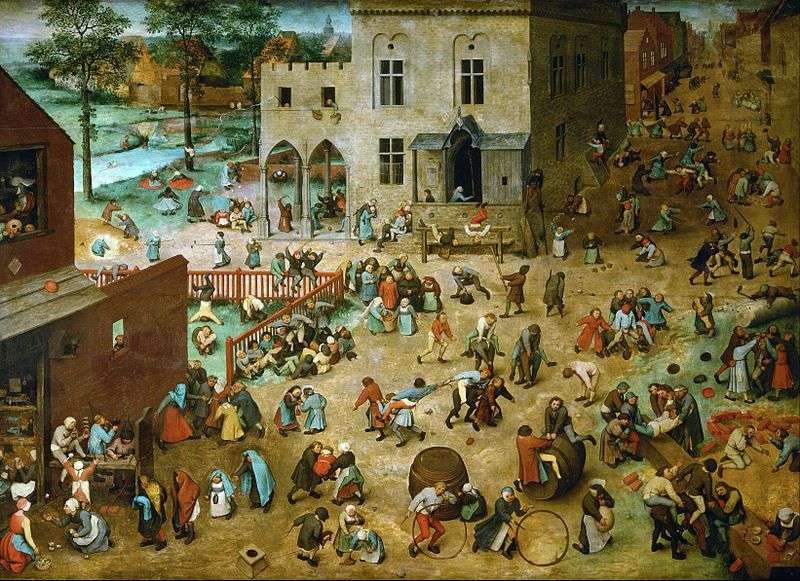 Kids Games by Peter Brueghel
Kids Games by Peter Brueghel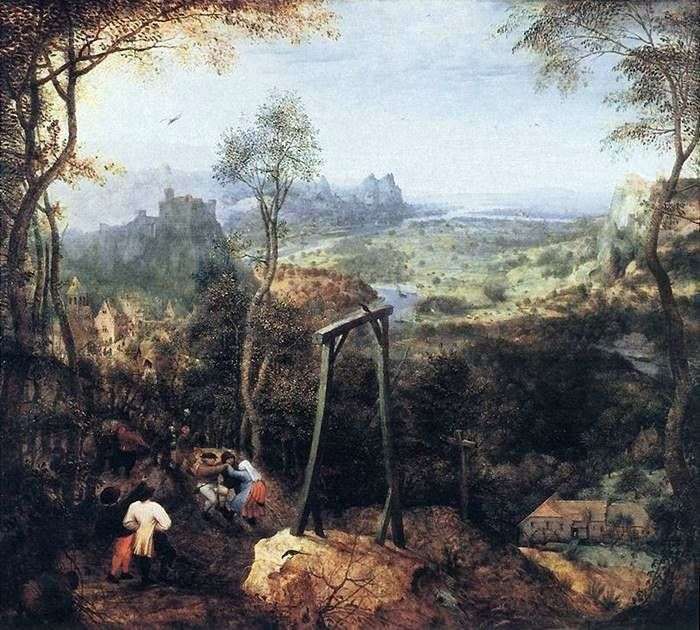 Magpie on the Gallows by Peter Brueghel
Magpie on the Gallows by Peter Brueghel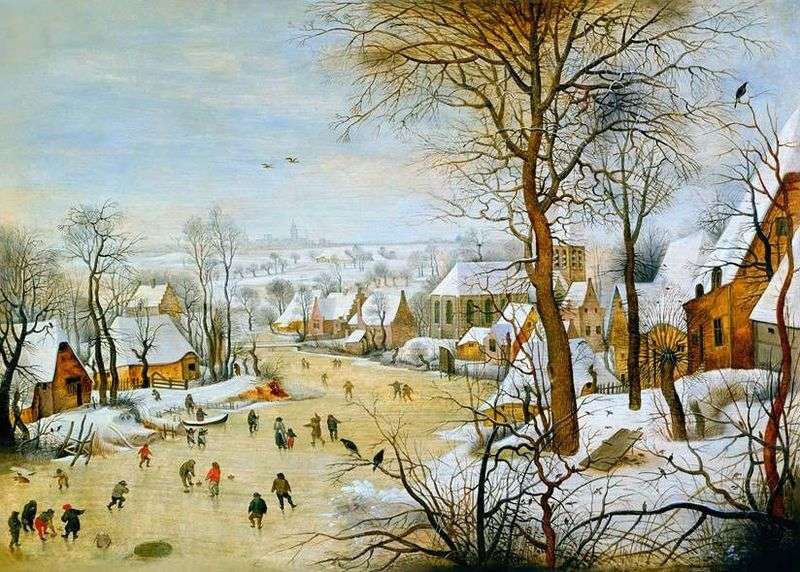 The Bird Trap by Peter Brueghel
The Bird Trap by Peter Brueghel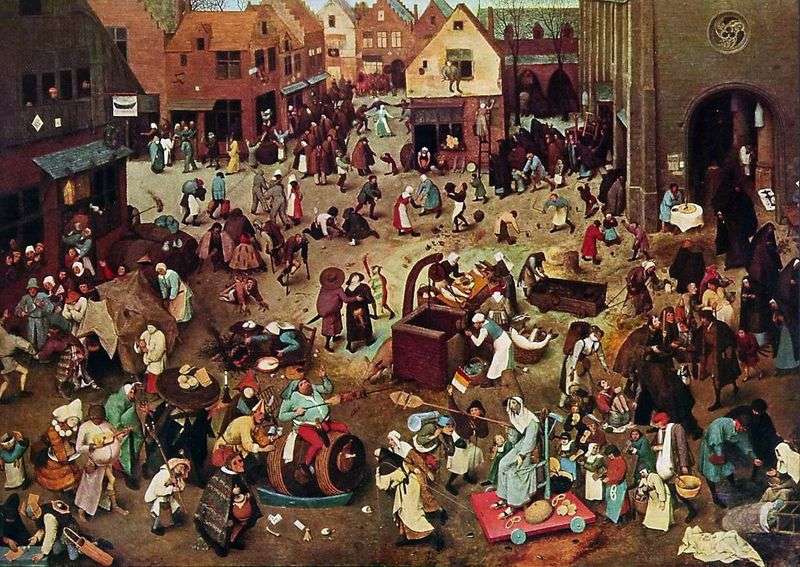 Carnival and Post by Peter Brueghel
Carnival and Post by Peter Brueghel